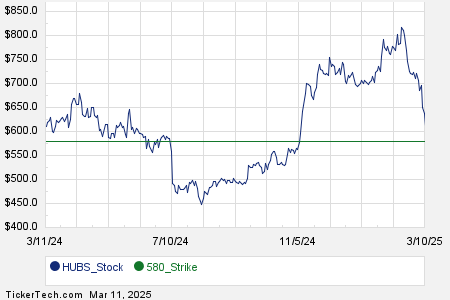Unlock Your Future: A Guide to Building a Million-Dollar Roth IRA by 2025
As 2025 approaches, now is the perfect time to set some financial goals, including thinking about your retirement. One smart move is to consider contributing to an individual retirement account, such as the Roth IRA. This choice could benefit your financial future significantly.
Roth IRAs have become popular among retirement savers for good reason. If you are currently in a lower tax bracket than you expect to be in the future, contributing after-tax dollars to a Roth IRA today is a wise decision. This strategy allows you to withdraw tax-free income and gains once you reach age 59 1/2 and comply with the five-year rule.
Start Your Mornings Smarter! Wake up with Breakfast news in your inbox every market day. Sign Up For Free »
Staying consistent with your investments could lead you to a million-dollar Roth IRA in the long run. If you’re eager to get started in 2025, here are the steps to help pave your way.

Image source: Getty Images.
Step 1: Create a Roth IRA Contribution Plan
The first move is to open a Roth IRA and start making contributions, provided you are eligible. For 2025, the contribution limit remains at $7,000 for individuals under age 50, with an additional $1,000 catch-up contribution for those aged 50 and above.
While contributing the maximum might seem daunting if you’re just beginning, it’s wise to set realistic goals. Start modestly and plan to increase your contributions over time. However, if you’re ready to commit fully this year, consider these helpful tips:
- Break down your goals: Split your annual contribution target into smaller steps. For example, aiming to contribute about $583 each month or approximately $135 each week would help you reach the $7,000 limit by year-end.
- Automate your savings: Establish automatic transfers from your checking account to your Roth IRA. This “set it and forget it” approach enables your retirement savings to grow effortlessly.
- Cut unnecessary expenses: Analyze your spending by reviewing your debit and credit card statements. Cancelling unused subscriptions or reducing discretionary spending allows you to redirect those funds toward your Roth IRA.
- Utilize unexpected income: Consider putting bonuses, tax refunds, or one-time cash gains straight into your Roth IRA for a financial boost without budgeting stress.
- Explore side income opportunities: Supplement your income through side jobs and funnel those earnings directly into your Roth IRA. An additional $1,000 each month could help you maximize your contributions and leave room for other financial goals.
Step 2: Turn Contributions into Investments
While contributing annually to a Roth IRA is crucial, investing those contributions is essential for reaching that million-dollar milestone. For example, investing $7,000 annually for 50 years would yield $350,000. While that amount is significant, you’ll achieve even more potential wealth by allowing your money to work for you through investments.
Investing is vital as it enables you to benefit from compound interest, which is the process where your earnings generate additional earnings, allowing your savings to grow exponentially over time.
The table below illustrates the potential growth of your contributions based on annual returns between 8% to 12%. Historically, S&P 500 index funds have averaged around a 10% annualized return over the long run:
|
$7,000 Invested Annually for: |
Growing at 8% |
Growing at 10% |
Growing at 12% |
|---|---|---|---|
|
20 years |
$345,960 |
$441,017 |
$564,891 |
|
30 years |
$856,421 |
$1,266,604 |
$1,892,048 |
|
40 years |
$1,958,467 |
$3,407,963 |
$6,013,997 |
Calculations by author.
Step 3: Get Started on Your Million-Dollar Roth IRA
Investing always comes with risks. Market returns aren’t guaranteed, and they can fluctuate yearly. What you earn will depend on your investments, whether in growth stocks, exchange-traded funds (ETFs), or other assets. Maintain a long-term perspective, conduct thorough research, and strive for a diversified portfolio to maximize your outcomes.
Even if your Roth IRA doesn’t reach seven figures, contributing to other accounts, like a 401(k) or a taxable brokerage, can still lead to a million-dollar retirement. Starting now and committing to consistent growth is crucial. The good news? You have until the tax filing deadline, around April 15, 2026, to make contributions for 2025. With a strategic approach, you can achieve the retirement you’ve always envisioned.
Discover a Potential $22,924 Social Security Bonus
Many Americans find themselves falling behind on their retirement savings. However, several lesser-known “Social Security secrets” could significantly enhance your retirement income. For instance, one simple strategy might provide as much as $22,924 extra each year! By learning how to maximize your Social Security benefits, you could step into retirement with the confidence and peace of mind you deserve. Click here to learn more about these strategies.
View the “Social Security secrets” »
The Motley Fool has a disclosure policy.
The views and opinions expressed herein are those of the author and do not necessarily reflect those of Nasdaq, Inc.



